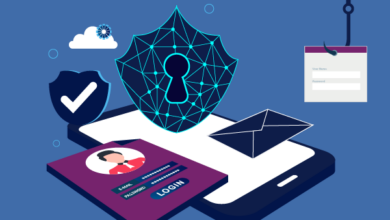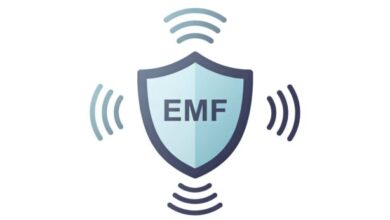The Art of Cybersecurity: Unveiling the Basics and Beyond of Penetration Testing

Introduction to Penetration Testing
In today’s digital landscape, where data breaches and cyber threats loom large, safeguarding information is critical. This is where penetration testing comes into play, regarded as the cornerstone of cybersecurity. Penetration testing involves simulating cyberattacks to identify potential security weaknesses in systems and networks. By understanding these vulnerabilities, organizations can address them proactively and thwart real threats before they cause damage. Engaging penetration testing as a service is a strategic move for businesses aiming to bolster their cybersecurity posture and protect their assets.
Penetration testing is not only about defense; it’s a proactive approach to security. With cyber threats evolving rapidly, penetration testing acts as a reality check for existing security measures, ensuring they can withstand hacker strategies. This process allows organizations to take preventative measures and comprehend the attacker mindset, a crucial step in maintaining robust cybersecurity defenses.
The Fundamentals of Penetration Testing
Understanding penetration testing begins with grasping its fundamental components. Essentially, it encompasses various types of tests, including external, internal, wireless, and web application testing. Each type is designed to assess specific vulnerabilities, depending on the target and testing scope. For instance, external tests evaluate internet-facing assets, while internal tests focus on threats within an organization’s firewall. Wireless testing examines vulnerabilities in wireless networks, and web application testing scrutinizes the security of online applications.
At its core, penetration testing aligns with ethical hacking. The distinction lies in the ethics involved; ethical hackers authorized to conduct these simulated attacks must adhere to a strict code that ensures no harm comes to the systems being tested. By mimicking the actions of malicious hackers, they provide invaluable insights into how an infrastructure might be exploited by real threat actors.
Tools and Techniques in Penetration Testing
Several tools have become indispensable in the field of penetration testing. Popular options include Metasploit, known for its extensive framework that aids in developing and executing exploits; Nmap, essential for network discovery and security auditing; and Wireshark, favored for its capabilities in network protocol analysis. Understanding and utilizing these tools effectively is integral to performing successful penetration tests.
In addition to tools, penetration testers employ several techniques and methodologies. Social engineering, where attackers manipulate human interactions to gain unauthorized access, is a pivotal technique. This could involve phishing attacks, pretexting, or baiting, where an attacker tricks individuals into divulging sensitive information. By understanding and employing such tactics, penetration testers can identify how susceptible an organization is to these strategies and recommend appropriate countermeasures.
Conducting an Effective Penetration Test
The efficacy of a penetration test heavily relies on meticulous planning and execution. Determining the regions to be evaluated and comprehending the risks involved are the first steps in the process, which usually starts with establishing the test’s scope. This careful planning ensures that the test aligns with the organization’s overarching security objectives.
Once the scope is established, testers proceed to simulate attacks on the agreed-upon targets. After the testing phase, a detailed analysis and reporting process follows. Testers compile their findings and provide actionable insights that assist businesses in fortifying their defenses against potential attacks. This feedback loop is essential for continuous security improvement and helps organizations to build a resilient security framework.
Role of Penetration Testing in Overall Security
Penetration testing is just one aspect of a comprehensive cybersecurity strategy, yet its role is invaluable. Regular tests keep businesses alert and adaptable to new security vulnerabilities as they arise. As cyber threats become more sophisticated, testing aligns security measures with the latest protective strategies, ensuring resilience against potential breaches. The impact of cybersecurity measures can be profound, affecting everything from systems integrity to safeguarding sensitive data and maintaining operational continuity.
Impact of Penetration Testing on Business Operations
The advantages of penetration testing extend across multiple business functions. By unearthing vulnerabilities before attackers do, companies significantly lower their risk profile, protecting their reputation and customer trust. This proactive approach can prevent devastating financial and reputational damage resulting from data breaches.
Moreover, penetration testing can streamline operations by identifying system inefficiencies, leading to optimized performance and cost savings. Organizations prioritizing security through regular testing often gain a competitive edge in the marketplace. As clients and customers increasingly value enterprises that can protect their data, businesses that demonstrate a commitment to cybersecurity stand to gain substantial trust and loyalty.
Future of Penetration Testing
As technology continues to evolve, so does the field of penetration testing. Automation and artificial intelligence are proving transformative, enhancing the speed and accuracy of tests. These advancements allow for more thorough and frequent testing, ensuring systems are continually safeguarded against emerging threats.
Emerging trends in cybersecurity reflect a growing focus on integrating these technologies to fortify security protocols. The latest cybersecurity trends and innovations emphasize adaptive security measures that anticipate threats before they fully emerge. This proactive approach is essential in an increasingly interconnected world, where the pace of technological advancements can outstrip traditional defensive strategies. As businesses and individuals continue to grapple with cyber threats, staying proactive and informed will become increasingly vital in maintaining robust cybersecurity defenses.




